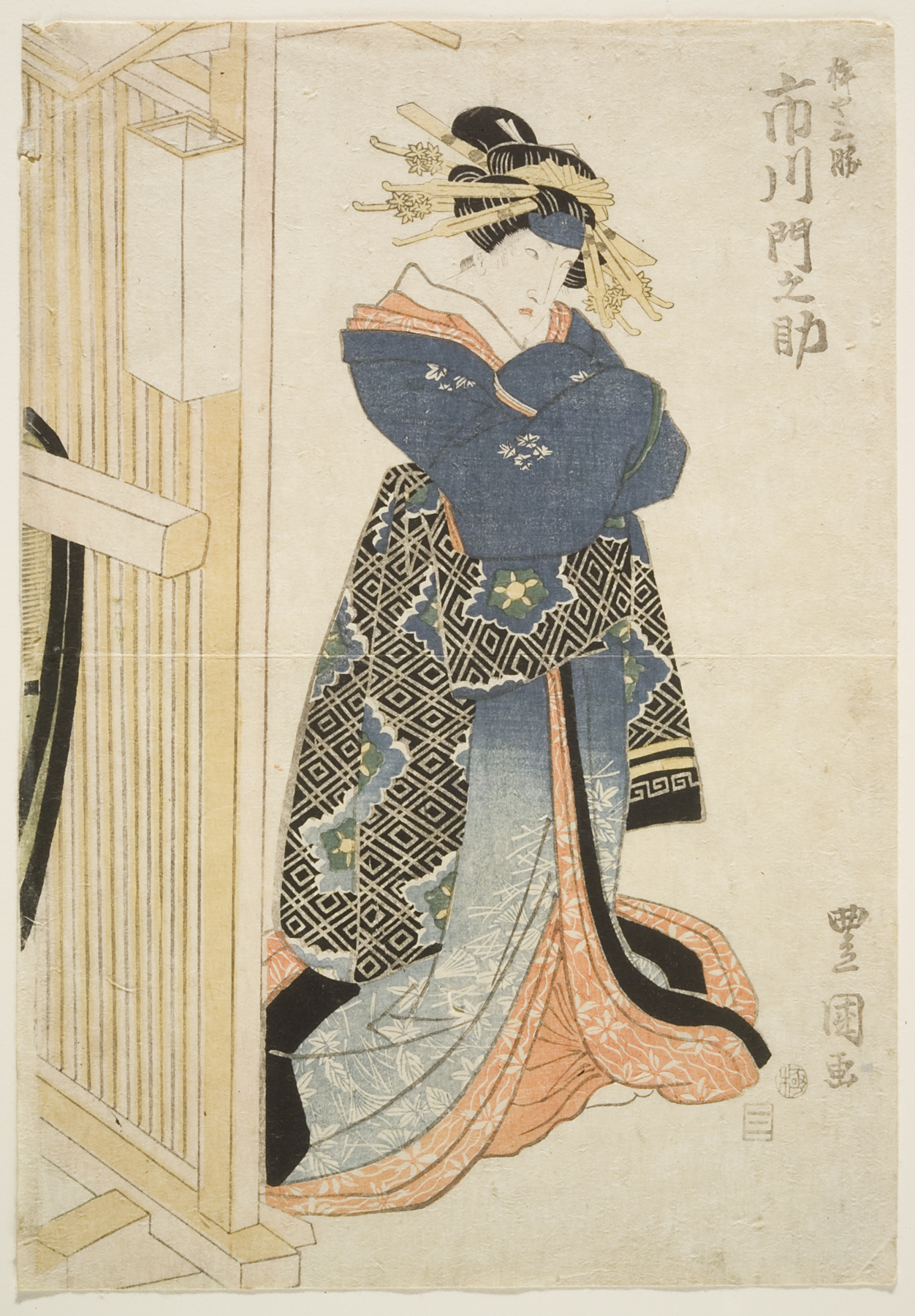Actor Ichikawa Monnosuke III as Kineya Sankatsu of the Minoya, Utagawa Toyokuni I
Artwork Overview
Utagawa Toyokuni I, artist
1769–1825
Actor Ichikawa Monnosuke III as Kineya Sankatsu of the Minoya,
circa 1815–1824, Edo period (1600–1868)
Where object was made: Japan
Material/technique: color woodcut
Dimensions:
Image Dimensions Height/Width (Height x Width): 362 x 252.4 mm
Image Dimensions Height/Width (Height x Width): 14 1/4 x 9 15/16 in
Mat Dimensions (Height x Width): 19 x 14 in
Image Dimensions Height/Width (Height x Width): 362 x 252.4 mm
Image Dimensions Height/Width (Height x Width): 14 1/4 x 9 15/16 in
Mat Dimensions (Height x Width): 19 x 14 in
Credit line: Gift of Mrs. Arthur S. Johnson (The May Finney Marcy Collection)
Accession number: 1964.0042
Not on display
If you wish to reproduce this image, please submit an image request

